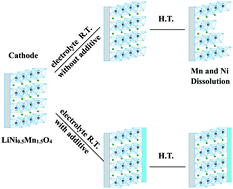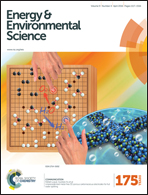Development of novel lithium borate additives for designed surface modification of high voltage LiNi0.5Mn1.5O4 cathodes†
Abstract
A novel series of lithium alkyl trimethyl borates and lithium aryl trimethyl borates have been prepared and investigated as cathode film forming additives. The borates are prepared via the reaction of lithium alkoxides or lithium phenoxides with trimethyl borate. Incorporation of 0.5–2.0% (wt) of the lithium borates to a baseline electrolyte (1.0 M LiPF6 in 3 : 7 (EC/EMC)) results in improved capacity retention and efficiency of high voltage graphite/LiNi0.5Mn1.5O4 cells especially upon cycling at elevated temperature (55 °C). The improved performance results from the sacrificial oxidation of the lithium borate on the cathode surface to generate a cathode passivation film. The lithium borates can be readily structurally modified to act as a functional group delivery agent to modify the cathode surface. Ex situ surface analysis of the electrodes after cycling confirms that the lithium borates modify the cathode surface and generate a borate rich surface film which inhibits electrolyte oxidation and Mn dissolution.


 Please wait while we load your content...
Please wait while we load your content...